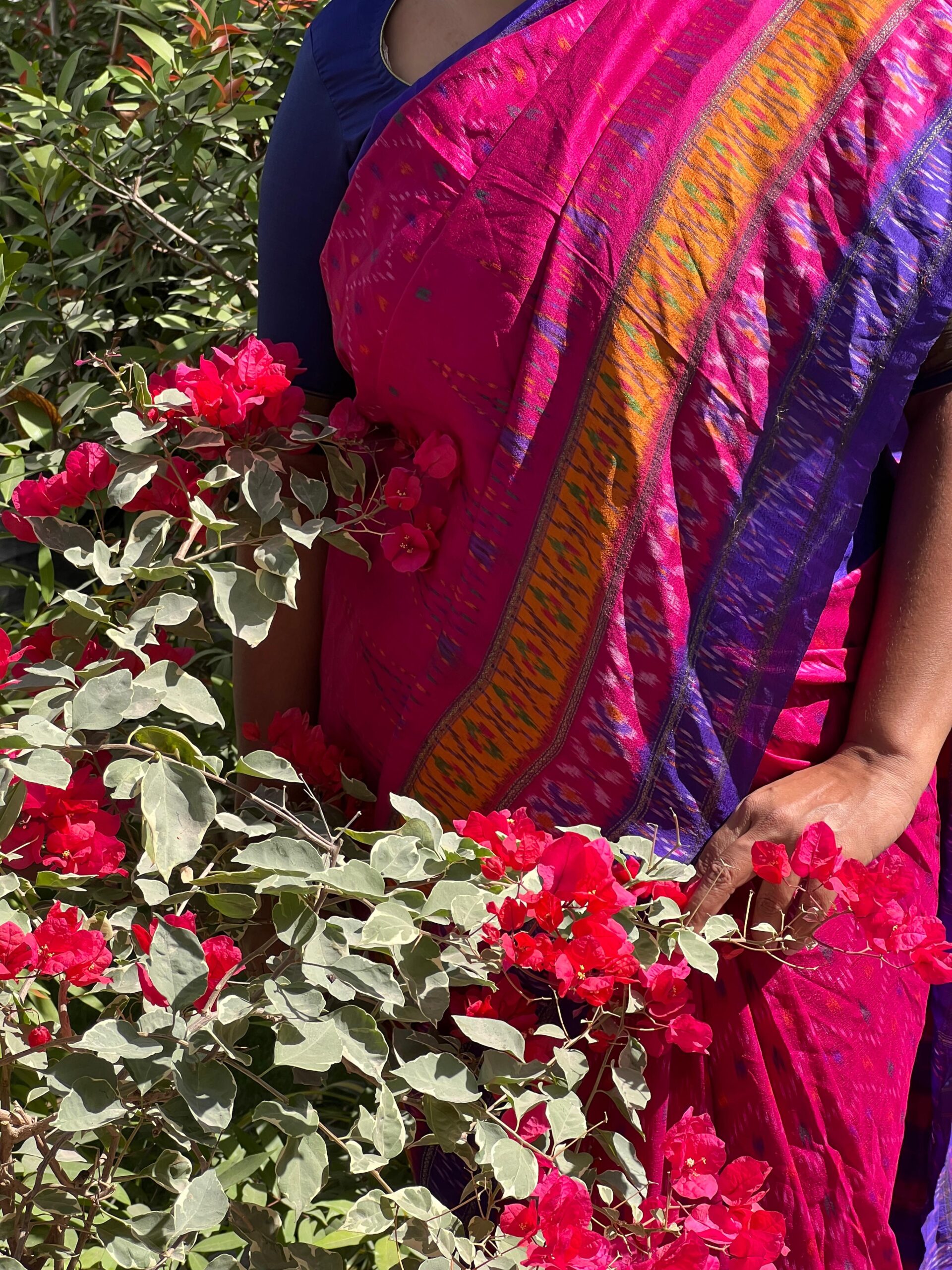Weaving a Legacy: Why Preserving Indian Handlooms Matters
Ishita Karuturi
When you think of India, what comes to mind? For many, it’s the vibrant colors, rich traditions, and incredible craftsmanship. And at the heart of this cultural tapestry lies the Indian handloom industry—a tradition that dates back over 5,000 years. From the luxurious Banarasi silks of Uttar Pradesh to the Pochampally ikats of Telangana, each region has its own unique weaving techniques, patterns, and designs. These handlooms aren’t just fabrics; they’re a symbol of artistry, history, and identity.
But here’s the thing: this beautiful tradition is under threat. The fast-paced, modern world we live in today is pushing these ancient crafts to endangerment. Preserving Indian handlooms isn’t just about saving an industry—it’s about protecting India’s heritage, and cultural identity.
Cultural Significance of Handlooms
Indian handlooms are more than just clothing. They’re heirlooms, passed down through generations, carrying with them memories, emotions, and stories of the past. Each piece tells a tale of history, traditions, and the values of the community it comes from. The motifs and patterns woven into these fabrics aren’t just decorative; they’re symbolic. The paisley design, for instance is believed to symbolize fertility and eternity while the lotus motif, represents purity and enlightenment.
For example, the Patola sarees of Gujarat are known for their double ikat weaving technique, a process so complex that it can take months to complete a single saree resulting in stunning geometric and floral patterns that tell stories of prosperity and love. Similarly, the Kanjeevaram sarees of Tamil Nadu are celebrated for their rich silk and gold zari work that is inspired by temple architecture, are often worn during weddings and religious ceremonies.
Economic Significance of Handlooms
Did you know that the handloom sector is one of the largest employers in India? It provides livelihoods to over 4.3 million weavers and artisans, many of whom come from rural and economically struggling communities. Many of these weavers belong to rural and economically struggling communities, where handloom weaving is often the primary source of income. The sector is also a significant contributor to India’s export economy, with handloom products being highly sought after in international markets.
But the harsh reality is that the rise of power looms and mass-produced textiles has led to a decline in demand for handwoven products. Younger generations are leaving the craft and traditional knowledge is being lost. Many weavers struggle with low wages, lack of access to modern technology, and inadequate marketing support. It’s a tough situation, but it’s not hopeless.
Environmental Significance of Handlooms
In a world where sustainability is becoming increasingly important, Indian handlooms offer a refreshing alternative to factory-made textiles. Handloom weaving is a low-energy process that relies on manual labor rather than machinery, which means it has a much smaller carbon footprint. Plus, many handloom products are made using natural fibers like cotton, silk, and wool, which are biodegradable and eco-friendly.
And let’s not forget about natural dyes! Derived from plants, minerals, and other organic sources, these dyes are non-toxic and renewable. By choosing handloom products, we’re not just supporting artisans—we’re also making a choice that’s better for the planet.
Steps Moving Forward
The truth is, many people don’t realize the skill and effort that goes into creating a handwoven textile. It’s easy to opt for cheaper, machine-made alternatives without thinking about the impact. But as consumers, we have the power to make a difference. As consumers, we can contribute to the preservation of Indian handlooms by making conscious choices. By purchasing handloom products, we not only support the livelihoods of weavers but also help keep a centuries-old tradition alive. Educating ourselves and others about the cultural and environmental significance of handlooms can also go a long way in ensuring their survival.
Non-governmental organizations (NGOs) and social enterprises also play a crucial role in promoting handloom products and empowering weavers. You should support organizations like Dastkar and Fabindia work to connect weavers with urban markets, ensuring that they receive fair wages for their work. Additionally, initiatives such as #VocalForLocal and #HandloomDay have helped raise awareness about the importance of supporting handloom products.
Indian handlooms are more than just textiles. They’re a reflection of who we are—our creativity, our resilience, and our diversity. They connect us to our past and carry forward the stories of our ancestors. So, the next time you see a handloom product, take a moment to appreciate the artistry behind it. By supporting the handloom industry, we’re not just buying a piece of fabric—we’re investing in a brighter, more sustainable future for India’s artisans. Together, we can keep the tradition alive for generations to come.
- Ministry of Textiles, Government of India. (2021). Annual Report 2020-2021. Retrieved from https://texmin.nic.in
- Dastkar. (n.d.). About Us. Retrieved from https://www.dastkar.org
- Fabindia. (n.d.). Our Story. Retrieved from https://www.fabindia.com
- National Handloom Development Corporation. (n.d.). Initiatives. Retrieved from https://www.nhdc.org.in

